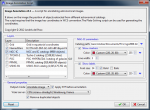Andres.Pozo
Well-known member
I also thought of that but it is not easy. Each catalog has different fields for the id of the object and the coordinates. For example, the Tycho catalog uses three fields for storing the object id and the RA is stored in degrees. PGC only needs one field for the id and the RA is in hours. Also, not every catalog has a magnitude field.vicent_peris said:It would be very nice if you can just type the CDS catalog code.
Perhaps I could write a generic VizieR layer, but it would be quite involved to use.
This is easy.Another important option is, IMO, to be able to select a magnitude range, with both lower and upper limits.
I have to think about what is the bet way for adding this functionality.And another wonderful option would be to select a list of files so it annotates all of them in a single action.




